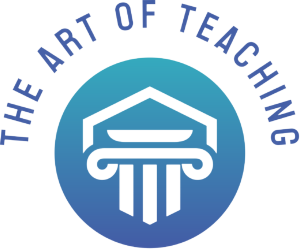
Understanding Cerebral Palsy: Causes, Symptoms, and Management
Understanding Cerebral Palsy
Cerebral Palsy is one of the most common motor disabilities affecting children worldwide, and it results from damage to a developing brain. This condition impacts muscle tone, coordination, posture, and sometimes cognitive abilities. The effects are lifelong, though with proper care and support, individuals can thrive and live fulfilling lives. Cerebral palsy is not a single disorder but rather a group of conditions that vary greatly in their symptoms and severity. Some children may experience only mild challenges with movement, while others may require extensive assistance in daily activities. Doctors classify cerebral palsy into four main types: spastic, athetoid (also known as dyskinetic), ataxic, and mixed forms. Each type affects movement differently, making early recognition and personalized management crucial. Understanding this condition helps families, caregivers, and educators provide better care and support.
Causes and Risk Factors
The causes of cerebral palsy are diverse, and many occur during pregnancy or birth. Brain damage may happen before a child is born due to infections, oxygen deprivation, or abnormal brain development. In some cases, complications during delivery, such as prolonged labor or lack of oxygen, contribute to the risk. Premature birth and low birth weight are two of the most significant factors, as babies born too early are more vulnerable to brain injuries. Genetics may also play a role, though cerebral palsy is not considered a strictly inherited condition. Environmental influences like maternal infections, exposure to toxins, or poor prenatal care can further raise the risk. It is important to separate facts from misconceptions—cerebral palsy is not caused by parental neglect or a single mistake during birth. Identifying these risk factors allows for greater awareness and proactive prenatal and postnatal healthcare.
Recognizing the Symptoms
Symptoms of cerebral palsy often appear in early childhood, but they can vary widely depending on the type and severity. Parents may first notice developmental delays, such as when a child is slow to sit, crawl, or walk. Muscle tone abnormalities are common, with some children experiencing stiffness and others having unusually floppy muscles. Coordination and balance problems often appear as difficulty walking or performing fine motor tasks. In some cases, cerebral palsy is accompanied by additional challenges such as difficulty speaking, vision or hearing impairments, and learning differences. The range of symptoms can make diagnosis complex, requiring observation over time. One important point is that symptoms do not worsen as the child grows, though the impact of the condition may change with development. Recognizing early signs and consulting a healthcare professional quickly can make a significant difference in treatment and quality of life.
Diagnosis and Medical Evaluation
Diagnosing cerebral palsy requires a thorough medical evaluation that looks at both physical and neurological development. Pediatricians usually begin by tracking a child’s developmental milestones and looking for delays. Neurological exams help identify muscle tone issues, reflexes, and coordination problems. Imaging tools such as MRI and CT scans can provide detailed pictures of the brain to determine if damage occurred. Blood tests and metabolic studies may also be conducted to rule out other conditions that could mimic cerebral palsy symptoms. Since the condition is not progressive, doctors rely heavily on medical history and consistent patterns in movement challenges. Early diagnosis is crucial because it allows interventions such as therapy and medication to begin sooner, giving the child the best chance for improved function. Families play an important role in sharing observations about their child’s development, which helps healthcare providers make accurate assessments.
Treatment and Management Approaches
While there is no cure for cerebral palsy, treatment focuses on improving independence, mobility, and quality of life. A combination of therapies is often recommended depending on the individual’s needs.
Some common treatment approaches include:
- Physical therapy to improve muscle strength, flexibility, and mobility
- Occupational therapy to help with daily tasks such as dressing, eating, and writing
- Speech and language therapy to enhance communication skills and swallowing functions
- Medications to reduce muscle stiffness, spasms, or seizures
- Surgical interventions to correct physical deformities or relieve severe spasticity
- Assistive technology such as braces, walkers, or communication devices
These treatments are tailored to each person and adjusted as the child grows. Collaboration among doctors, therapists, and families ensures the care plan evolves with changing needs. The goal is not just medical management but also supporting confidence, self-expression, and independence in daily life.
Daily Life with Cerebral Palsy
Living with cerebral palsy requires adapting to both physical and emotional challenges, but with support, children and adults can thrive. Education often plays a central role, and many schools provide accommodations to help students succeed academically. Mobility aids like wheelchairs and walkers support independence, allowing individuals to participate more fully in their communities. Daily care routines may require extra time and patience, but personalized plans can reduce stress for families. Social interaction is another important aspect, as building friendships and engaging in activities contributes greatly to emotional well-being. Caregivers often face stress themselves, making access to community support groups and mental health resources invaluable. Empowering individuals with cerebral palsy to set personal goals and celebrate progress fosters resilience and a positive outlook. Despite the challenges, many people with cerebral palsy achieve higher education, careers, and fulfilling personal lives with the right support systems.
Advancements in Research and Care
Medical research continues to improve understanding and treatment options for cerebral palsy. Advances in neuroimaging have made it possible to detect brain injuries earlier, helping doctors design targeted care plans. New medications and injection therapies, such as botulinum toxin, are helping reduce muscle stiffness more effectively than before. Technology is playing a huge role, with assistive communication devices and robotic mobility aids offering greater independence. Researchers are also exploring stem cell therapy and regenerative medicine as potential future treatments. Rehabilitation programs are becoming more individualized, focusing not only on physical ability but also on mental health and social inclusion. The rise of telehealth services has also made therapy and consultations more accessible, especially for families in remote areas. With continued research, there is hope for even more effective interventions that can enhance quality of life for individuals with cerebral palsy.
Living with Hope and Strength
Cerebral palsy may bring lifelong challenges, but it also fosters incredible resilience and strength in those who live with it. Families and caregivers often discover creative solutions and adapt daily routines to make life smoother. Community organizations and advocacy groups provide vital resources, from therapy programs to financial assistance and educational support. Many individuals with cerebral palsy grow up to lead independent and fulfilling lives, proving that physical challenges do not limit personal success. By raising awareness and supporting inclusion, society can create more opportunities for individuals with cerebral palsy to thrive. Encouragement, patience, and empathy go a long way in empowering children and adults alike. Ultimately, living with cerebral palsy is about more than managing symptoms—it is about building a future filled with hope, dignity, and meaningful experiences.
Frequently Asked Questions (FAQ)
1. Is cerebral palsy a progressive condition?
No, cerebral palsy is not progressive. The brain injury does not worsen over time, though the challenges associated with the condition may change as the person grows.
2. Can children with cerebral palsy attend regular schools?
Yes, many children with cerebral palsy attend mainstream schools with the help of individualized education plans and accommodations.
3. What is the life expectancy for someone with cerebral palsy?
Life expectancy varies depending on severity and associated health conditions, but many people with cerebral palsy live long, healthy lives.
4. Are there cures available for cerebral palsy?
Currently, there is no cure. Treatment focuses on managing symptoms, improving independence, and enhancing quality of life.
5. How can families find reliable support and resources?
Families can reach out to healthcare providers, local support groups, advocacy organizations, and national disability resources for guidance and assistance.
Takeaway
Cerebral Palsy is a complex condition that requires understanding, patience, and a holistic approach to care. With the right combination of therapies, support systems, and adaptive tools, individuals can lead meaningful and independent lives. Families and communities play a vital role in providing encouragement and opportunities, ensuring that people with cerebral palsy are empowered to reach their fullest potential.


